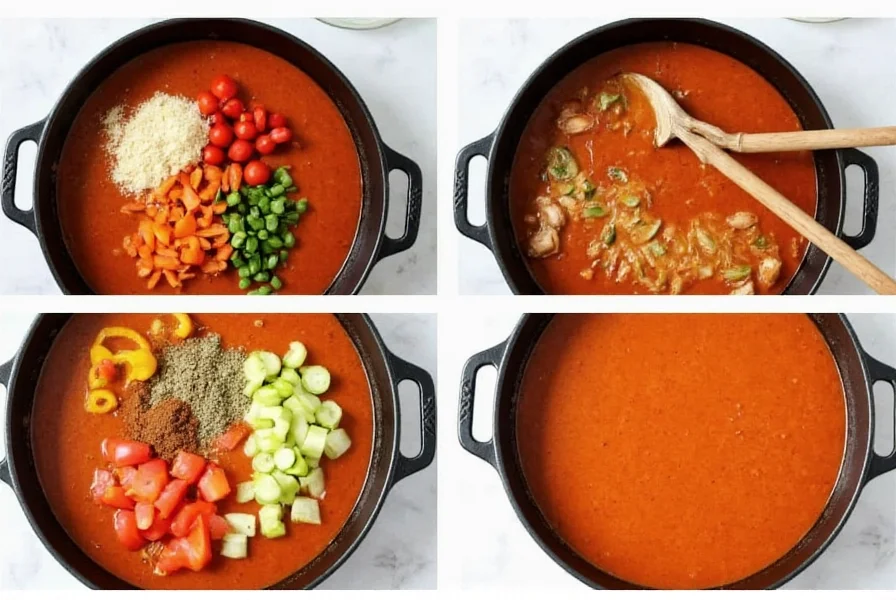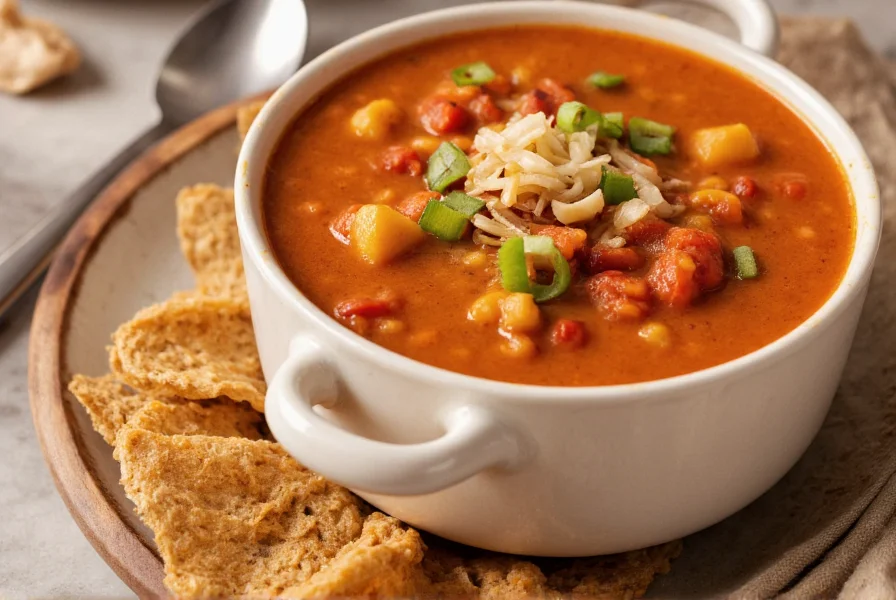Chicken chili soup has emerged as a popular alternative to traditional beef-based chili, offering a lighter yet equally satisfying option for home cooks. Unlike its heartier counterpart, chicken chili soup typically features white beans, corn, and lean poultry simmered with aromatic spices. The dish originated in the American Southwest but has evolved with regional variations across North America. What sets exceptional chicken chili apart is the careful balance of smoky, spicy, and tangy elements that create depth without overwhelming the delicate chicken flavor.
The Unique Appeal of Chicken Chili Soup
While traditional chili relies on beef's robust flavor, chicken chili soup showcases how lean protein can shine when paired with complementary ingredients. The lighter base allows subtle spices like cumin and smoked paprika to enhance rather than dominate. Chicken chili soup typically cooks faster than beef versions—most recipes require just 60-90 minutes from start to finish. This efficiency makes it ideal for weeknight meals without sacrificing complexity. Many home cooks appreciate how chicken chili soup adapts well to dietary preferences, naturally accommodating gluten-free and dairy-free variations.
| Ingredient Category | Essential Components | Flavor Contribution |
|---|---|---|
| Protein Base | Boneless chicken thighs, white beans | Creamy texture, lean protein |
| Aromatics | Onion, garlic, jalapeño | Flavor foundation, subtle heat |
| Spices | Cumin, smoked paprika, oregano | Earthy depth, smoky notes |
| Liquid | Chicken broth, fire-roasted tomatoes | Bright acidity, rich base |
Building Flavor Layers in Chicken Chili Soup
Creating exceptional chicken chili soup requires understanding flavor layering. Start by properly browning your chicken—this develops fond (those browned bits on the pot bottom) that forms the flavor foundation. Don't rush the aromatic stage; cook onions until translucent before adding garlic to prevent bitterness. For authentic Southwest flavor, toast your spices in the pot for 30 seconds before adding liquids. This simple step unlocks essential oils that dramatically enhances spice complexity.
When selecting ingredients for your easy chicken chili soup recipe, prioritize quality where it matters most. Fresh garlic beats jarred alternatives, and fire-roasted canned tomatoes add dimension regular tomatoes can't match. Boneless chicken thighs often outperform breasts in chili—they stay moist during simmering and contribute richer flavor. For the healthiest chicken white bean chili, choose low-sodium broth and rinse canned beans thoroughly.

Perfecting Your Chicken Chili Soup Recipe
Follow these professional techniques for consistently excellent results when making chicken chili soup from scratch:
- Brown chicken properly: Pat meat dry before searing to achieve proper caramelization
- Build flavor gradually: Add spices after aromatics but before liquids to toast them properly
- Control acidity: Balance tomatoes with a pinch of sugar if needed
- Simmer gently: Maintain low heat to prevent chicken from becoming tough
- Finish bright: Stir in fresh lime juice and cilantro just before serving
The best spices for chicken chili soup create harmony rather than heat dominance. While cayenne adds kick, smoked paprika provides depth without overwhelming spice. Cumin remains essential but use oregano sparingly—it can quickly dominate. For complex flavor without excessive heat, remove jalapeño seeds before dicing. Remember that chili flavor develops over time; many cooks find day-old chili tastes significantly better as flavors meld.
Nutritional Benefits and Dietary Adaptations
Chicken chili soup offers notable nutritional advantages over traditional versions. A typical serving contains approximately 300-350 calories with 25-30 grams of protein, making it suitable for various dietary patterns. The inclusion of white beans boosts fiber content to 8-10 grams per serving, supporting digestive health. For those following a gluten-free chicken chili soup preparation, naturally avoid flour-based thickeners and confirm broth purity.
Adaptations for specific dietary needs remain straightforward. To create a dairy-free version, simply omit cheese toppings or use nutritional yeast for similar umami notes. For lower sodium content, prepare broth from scratch or select low-sodium varieties and enhance flavor with extra herbs. Those seeking extra protein can add an additional bean variety without compromising the dish's integrity. The chicken chili soup cooking time remains consistent across most adaptations—typically 60-90 minutes total.

Serving Suggestions and Storage Tips
Chicken chili soup achieves its full potential when paired with complementary elements. Traditional toppings include avocado slices, fresh cilantro, and a squeeze of lime. For added texture, consider crushed tortilla chips or a dollop of Greek yogurt instead of sour cream. The dish pairs beautifully with simple cornbread or a crisp green salad for complete meal satisfaction.
Proper storage maintains quality for future enjoyment. Cool soup completely before transferring to airtight containers. Refrigerated chicken chili soup stays fresh for 3-4 days, while frozen portions maintain quality for up to 3 months. When reheating, add a splash of broth to restore ideal consistency. Many home cooks appreciate how chicken chili soup with white beans often tastes even better the second day as flavors continue developing.
Troubleshooting Common Issues
Even experienced cooks encounter challenges with chicken chili soup. If your soup tastes bland, you likely under-seasoned during cooking—correct by adding salt incrementally while tasting. For overly thin consistency, create a slurry with cornstarch and cold water, then stir in gradually. If the chicken becomes tough, you've likely simmered too vigorously; maintain gentle bubbles for tender results.
When making slow cooker chicken chili soup, adjust techniques accordingly. Brown chicken first for best flavor, then transfer to crockpot. Add delicate ingredients like lime juice and fresh herbs only during the last 30 minutes of cooking. Remember that slow cookers concentrate flavors differently than stovetop methods, so you may need to adjust seasoning at the end.
Frequently Asked Questions
How long does chicken chili soup need to simmer?
Chicken chili soup requires 30-40 minutes of gentle simmering after adding all ingredients. This allows flavors to meld while keeping chicken tender. Total preparation time typically ranges from 60-90 minutes depending on your method.
Can I use chicken breast instead of thighs in chili?
Yes, but chicken thighs generally produce better results in chili due to their higher fat content, which keeps the meat moist during simmering. If using breasts, cut into larger chunks and avoid overcooking to prevent dryness.
What makes chicken chili different from traditional chili?
Chicken chili typically features white beans and corn instead of kidney beans, uses lean poultry instead of beef, and has a lighter broth base. It generally cooks faster and offers a brighter flavor profile with less heaviness than traditional beef chili.
How can I make chicken chili soup thicker?
Create a slurry with 1 tablespoon cornstarch mixed with 2 tablespoons cold water. Stir this into simmering chili and cook for 2-3 minutes until thickened. Alternatively, mash some beans against the pot side to naturally thicken the broth.











 浙公网安备
33010002000092号
浙公网安备
33010002000092号 浙B2-20120091-4
浙B2-20120091-4